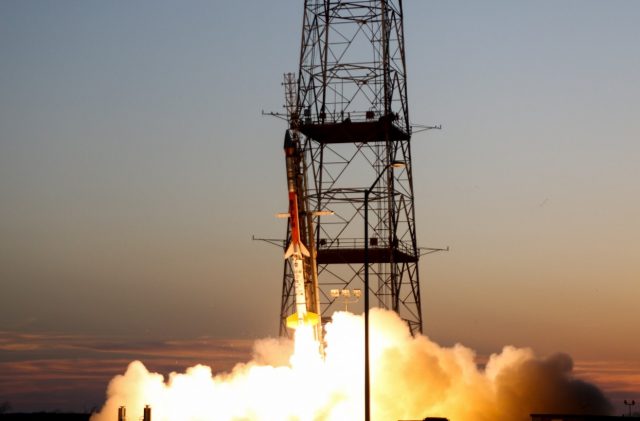
The US Air Force Research Laboratory and Air Force Office of Scientific Research (AFRL/AFOSR) have launched a new sounding rocket to collect data to better understand hypersonic flight.
Dubbed BOLT II “In memory of Mike Holden,” the flight experiment launched on the evening of March 21 from the National Aeronautics and Space Administration’s (NASA) Wallops Flight Facility in Virginia.
The experiment successfully flew the planned flight path and acquired scientific data to further the air force’s understanding of boundary layer transition, turbulent heating, and drag at hypersonic conditions. Dr. Michael Holden, who, up until his passing in 2019, had been a leader in the hypersonics field since the 1960s.
The goal of the AFRL/AFOSR BOLT II flight experiment is to collect scientific data to better understand Boundary Layer Transition (BOLT) and Turbulence (BOLT II) during hypersonic flight. Monday’s launch of the two-stage suborbital sounding rocket has paved the way for the next chapter of discovery in this area of basic research, the air force said.
“The flight experiment was designed to provide access to hypersonic boundary layer turbulence measurements in a combination of low-disturbance air and high Reynolds numbers seen in flight, but that are not achievable in ground test facilities,” said Dr. Sarah Popkin, who oversees the AFRL/AFOSR BOLT II project as AFOSR’s Program Officer for High-Speed Aerodynamics.
“The experimental vehicle included over 400 sensors geared toward correlating surface pressure, heat flux, and skin friction in a hypersonic boundary layer. The two-sided experiment seeks to understand both “natural” and “tripped” turbulent boundary layer development,” said Dr. Sarah Popkin.
The BOLT II science team is led by Texas A&M University with key collaborators at NASA, CUBRC, University of Minnesota, United States Air Force Academy, University of Maryland, University of Arizona, and Johns Hopkins University Applied Physics Laboratory; along with international collaboration from Australia’s Defence Science and Technology group and the University of Queensland.
Similar to the BOLT I program, BOLT II included a symbiotic trio of wind tunnel testing, high-fidelity computations, and a flight experiment. The wind tunnel and computational data acquired during the BOLT II project informed the design and placement of over 400 sensors to capture correlations needed to, in turn, improve and validate boundary layer turbulence models.
Unique to BOLT II, this project provided the first-ever full-scale ground testing of the flight geometry. Post-processing of the flight data will be directly compared to the earlier entry into the CUBRC LENS II shock tunnel. This facility replicated the Mach and Reynolds number conditions expected for the BOLT II trajectory but at higher, conventional disturbance air conditions. “The results from these two data sources provide a one-of-a-kind direct comparison between ground and flight experiment conditions with identical hardware. A second, full-scale wind tunnel test campaign, is being carried out by the University of Queensland, which is also matching flight conditions and simulating vehicle surface heating observed during flight,” said Popkin.


























